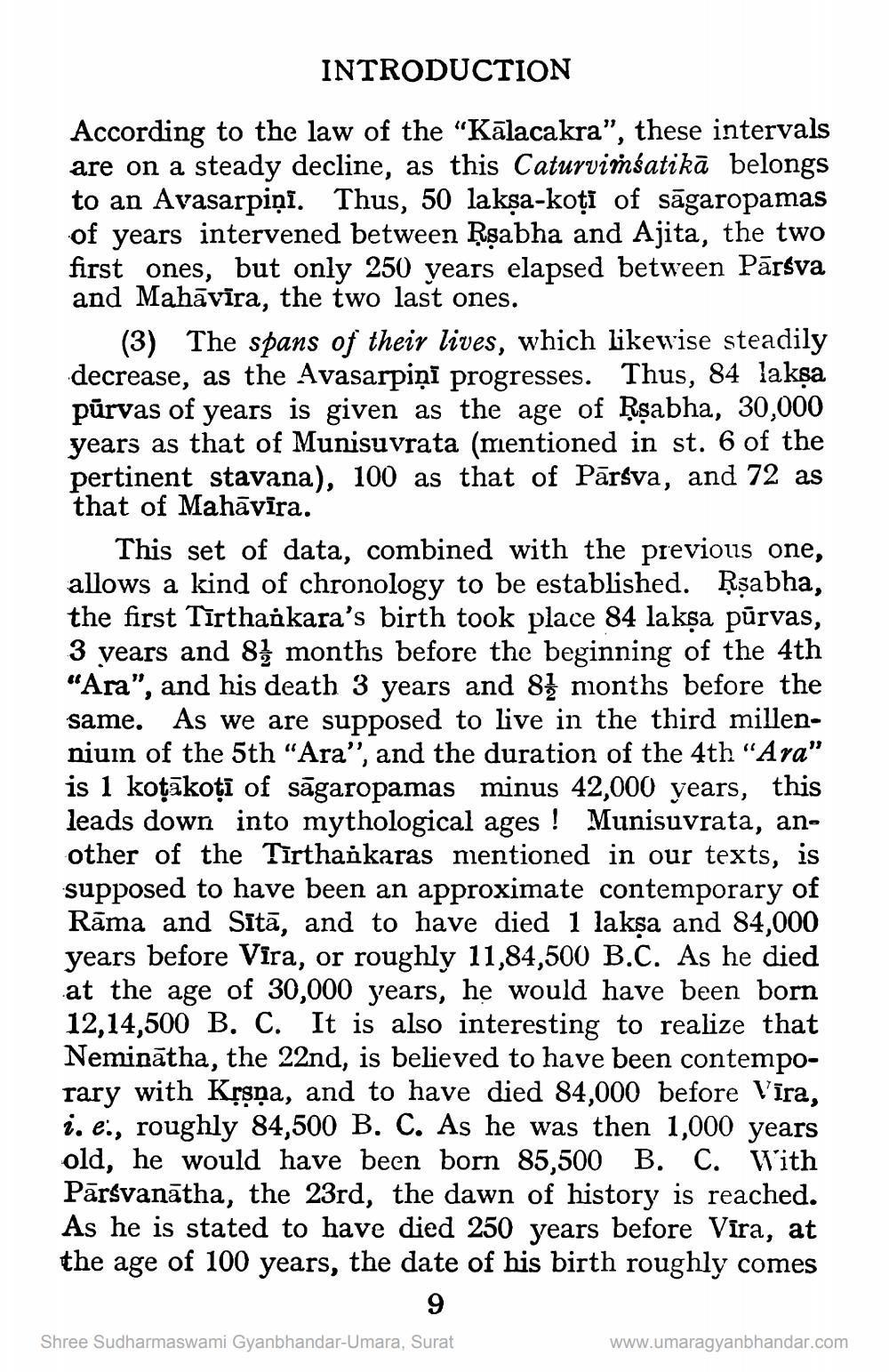________________
INTRODUCTION
According to the law of the "Kālacakra”, these intervals are on a steady decline, as this Caturviñśatikā belongs to an Avasarpiņi. Thus, 50 laksa-koți of sāgaropamas of years intervened between Rşabha and Ajita, the two first ones, but only 250 years elapsed between Pārsva and Mahāvīra, the two last ones.
(3) The spans of their lives, which likewise steadily decrease, as the Avasarpiņi progresses. Thus, 84 laksa pūrvas of years is given as the age of Rsabha, 30,000 years as that of Munisuvrata (mentioned in st. 6 of the pertinent stavana), 100 as that of Pārsva, and 72 as that of Mahāvīra.
This set of data, combined with the previous one, allows a kind of chronology to be established. Rsabha, the first Tīrthaikara's birth took place 84 lakṣa pūrvas, 3 years and 87 months before the beginning of the 4th "Ara", and his death 3 years and 81 months before the same. As we are supposed to live in the third millenniurn of the 5th “Ara”, and the duration of the 4th "Ara" is 1 kotākoți of sāgaropamas minus 42,000 years, this leads down into mythological ages! Munisuvrata, another of the Tīrthankaras mentioned in our texts, is supposed to have been an approximate contemporary of Rāma and Sītā, and to have died 1 laksa and 84,000 years before Vira, or roughly 11,84,500 B.C. As he died at the age of 30,000 years, he would have been born 12,14,500 B. C. It is also interesting to realize that Neminātha, the 22nd, is believed to have been contemporary with Kroņa, and to have died 84,000 before l'īra, 2. e., roughly 84,500 B. C. As he was then 1,000 years old, he would have been born 85,500 B. C. With Pārsvanātha, the 23rd, the dawn of history is reached. As he is stated to have died 250 years before Vira, at the age of 100 years, the date of his birth roughly comes
9
Shree Sudharmaswami Gyanbhandar-Umara, Surat
www.umaragyanbhandar.com




